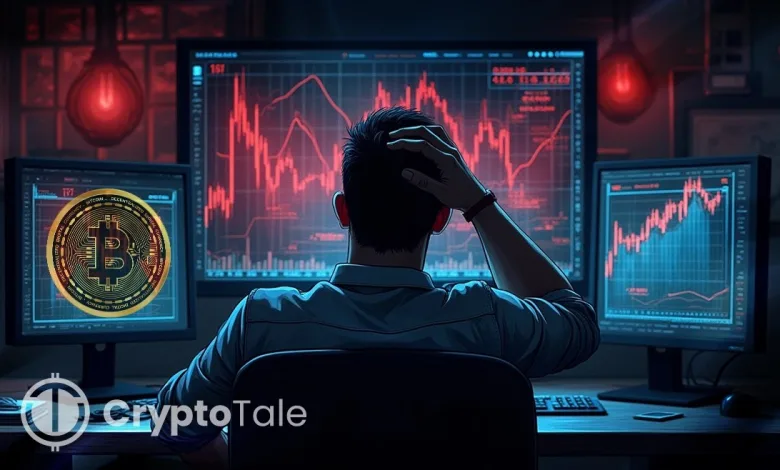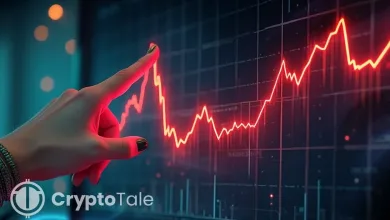Crypto Treasury Exposure Triggers Broad Sell-Off in Public Firms

- Tron Inc. shares have dropped 85% since June, exposing risks in crypto treasury models.
- Firms like MicroStrategy and Bitmine face sharp losses as token-linked valuations sink.
- Regulators probe over 200 firms tied to DAT hype, citing transparency and market risks.
Public companies with large crypto holdings are facing heavy losses as digital asset markets slump with Tron Inc. experiencing a high impact. The company’s stock has dropped sharply since June, showing how fragile the corporate treasury model tied to crypto can be. This decline underscores the risks firms face when their balance sheets depend more on volatile tokens than business fundamentals.
Tron Inc. and the DAT Market Slide
Tron Inc., a Nasdaq-listed firm and souvenir manufacturer, peaked at $12.80 on June 20. Since then, its shares have fallen 85%. September alone saw a 55% decline. Analysts point to fading hype around digital asset treasuries, also called DATs, as one driver.
Peter Chung, head of research at Presto Research, said that hype often inflates values when new trends appear. As the frenzy eases, prices drop to levels closer to fundamentals. He compared the current cycle to the Circle IPO craze earlier this year.
Czhang Lin of LBank Labs said the issue is not limited to Tron Inc. Many firms with similar exposure are battling the same challenges which stem from falling token prices and weaker investor sentiment in the digital asset sector.
Tron Inc. went public in July through a reverse merger with SRM Entertainment. It quickly became a high-profile example of the risks tied to DAT-linked business models.
Wider Impact Across Crypto-Linked Companies
Other companies with digital asset treasuries have also seen major losses. MicroStrategy, which holds large amounts of Bitcoin, is down 30% in three months. Bitmine Immersion Technologies Inc., an Ethereum treasury firm, has fallen 67% in the same period.
Stephen Gregory, founder of trading platform Vtrader, blamed poor execution and hasty listings for the decline. He said many firms rushed to market without developing solid long-term strategies.
Regulators are also taking action. The SEC and FINRA are investigating over 200 firms for suspicious trading tied to crypto treasury announcements. These probes highlight growing concerns about transparency and market integrity in this sector.
The connection of Tron Inc. with Justin Sun, the founder of TRON and a consultant of the company, adds to the pressure. Sun has faced repeated scrutiny from regulators, including accusations of selling unregistered securities. His recent involvement with the World Liberty Financial project added further controversy.
After the WLFI token event on September 1, Sun claimed 600 million tokens. He moved 9 million tokens to the HTX exchange, calling the move routine. The WLFI team later froze his remaining 591 million unlocked tokens, citing concerns over his actions.
Meanwhile, TRX, the native TRON token, has slipped nearly 1% in the last day. It trades at $0.33, with a market cap of $31.56 billion. TRX remains the 9th-largest cryptocurrency but shows the market’s cautious outlook.
Related: Digital Asset Treasuries Face Pressure, ETH Stands Strong
Systemic Risks in Treasury Models
The recent crash illustrates the systemic risk, the increased interconnection between corporate treasuries and crypto markets. Firms with high dependence on tokens to strengthen the balance sheet experience a drastic change in valuation. When crypto markets fall, these firms struggle regardless of their operational performance.
This cycle exposes the limits of using volatile digital assets as core treasury reserves. The sell-off raises questions on sustainability and risk management to investors. Firms will require greater mechanisms to survive extended recessions without having to be dependent on speculative token values.
The wave of losses has sparked broader doubts about whether the “corporate treasury plus crypto” model can last. Until firms balance digital holdings with solid fundamentals, they remain exposed to the market’s steepest swings.





